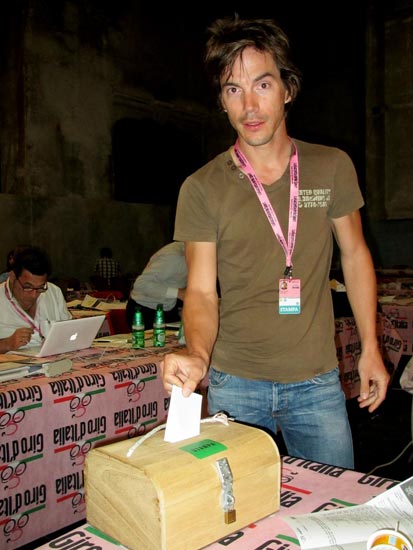Rolling with the puncheur: How Greg Van Avermaet stopped being racing's 'nearly man'
Having won the Olympic road race gold medal and spent three days in the Tour yellow jersey, cycling’s ‘nearly man’ turned over a new leaf last year. But will 2017 be the year in which Greg Van Avermaet finally comes good in the Classics?
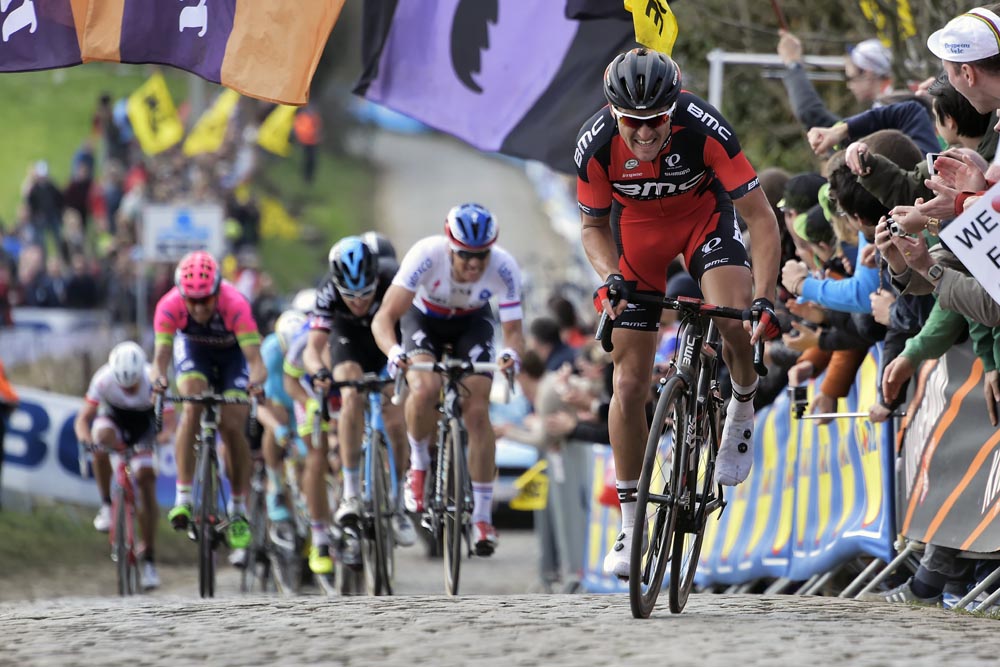
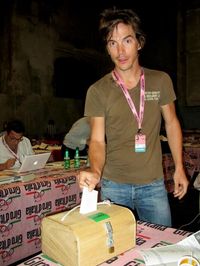
One-day star Greg Van Avermaet, by his own admission, was a cyclist “who didn’t finish off big races”. Now, with a Tour de France yellow jersey and an Olympic gold medal at home, he heads into the 2017 season as cycling royalty.
Van Avermaet attacked and overpowered his last remaining rival Dane Jakob Fuglsang in the Rio de Janeiro Olympic road race in August, adding a golden shine to a summer that already included a Tour stage win and three days in the yellow jersey.
“The way people see me is different now,” he says. “I was always the guy who didn’t finish off the big races, always there, but never winning the big things, but then with the Tour and the Olympics, that view changed.
"Now, I’m at the point where I want to be and where I thought I could be, to have these results. It finally came out.”
It came just when it looked as though Van Avermaet’s season had spun out of control. 2016 started well when the Belgian won Omloop Het Nieuwsblad, and a stage and overall in the Tirreno-Adriatico stage race. Many critics considered that he had shaken that nearly-man status.
After fifth in Milan-San Remo and with Tom Boonen struggling, the Belgian press billed him as their star for their biggest race, the Tour of Flanders.
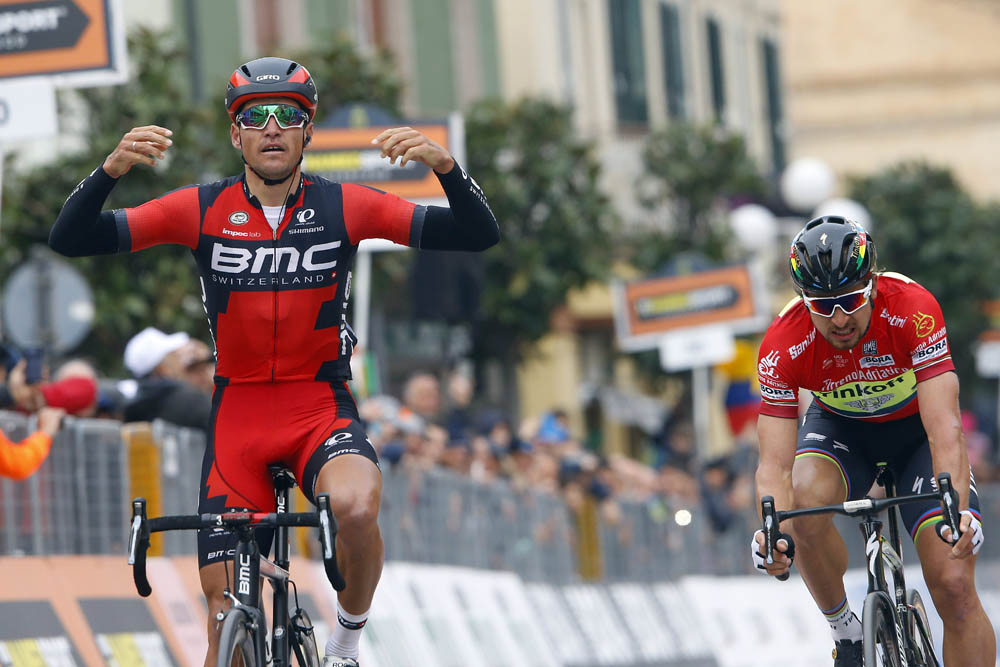
All seemed well — even the sun shone in Flanders — but then with 100 kilometres to go, team helper Manuel Quinziato suddenly shifted right to avoid danger and the BMC troop fell like dominoes.
The latest race content, interviews, features, reviews and expert buying guides, direct to your inbox!
Five in BMC’s red and black colours were sprawled over the adjacent pavement. Their team leader, Van Avermaet, nursing his right collarbone, sat watching the group and his season racing away from him.
His sister broke the news on Twitter — the Belgian star had fractured his collarbone. Slovak Peter Sagan (Tinkoff) celebrated his first big Classic win in the rainbow jersey later that day. Van Avermaet’s heart sank. What was left for him?
Flanders setback
Reflecting at the season’s end on a tumultuous year, a relaxed Van Avermaet professes that coming back mid-season is “the hardest part” for an athlete.
“I was thinking I could win Flanders. It should’ve been one of my biggest races of the year. That was a big disappointment,” he continues.
“At least I already had the Het Nieuwsblad win, Tirreno too, and fifth in Milan-San Remo. That was something and gave me a good back-up. I started Flanders with my best results ever and then that happened.”
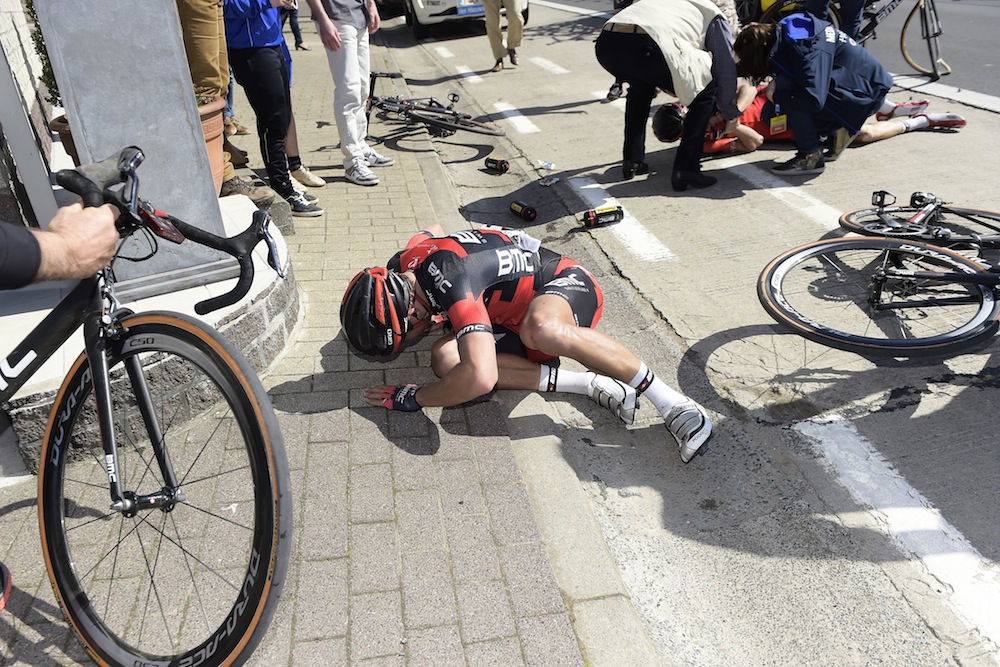
He was off the bike and then began to “train like crazy”. BMC gave him some space in the Tour de France to go for specific stage wins and the national coach convinced him to consider Rio de Janeiro, which most considered a course for Grand Tour types like Chris Froome or Vincenzo Nibali.
Rio bravo!
Van Avermaet’s opportunity to win Flanders slipped away, but it appeared to stoke an inner fire — a desire to prove he was no longer the nearly man.
That determination showed when he spotted and entered the right escape in the Tour’s Massif Central.
A massive 17.4-kilometre solo effort to Le Lioran ski resort paid off, but unlike his first Tour stage win the year before, the time gains earned him cycling’s celebrated yellow leader’s jersey.
BMC backed him and he kept it for three days, until the high mountains took their toll and Froome darted away on the descent to Bagnères-de-Luchon.
While the Rio favourites fought each other through the mountains, Van Avermaet was able switch off earlier and save something for Rio.
Van Avermaet explains he was “worried” when he saw the course in Brazil for the first time in training, but that he had “some luck” when Italian Nibali and Colombian Sergio Henao crashed on the final descent. He had the strength, however, to survive over the final Chinesa climb.
With Fuglsang, he reeled in lone leader Rafal Majka with three kilometres left and did his thing in the sprint along Copacabana Beach.
“Sure, it does,” he says when asked if the yellow jersey and gold medal made up for the Flanders disappointment. “I thought the Olympics wouldn’t be a perfect parcours for me. The Tour wasn’t the best parcours for me, either, but in the end, everything worked out.
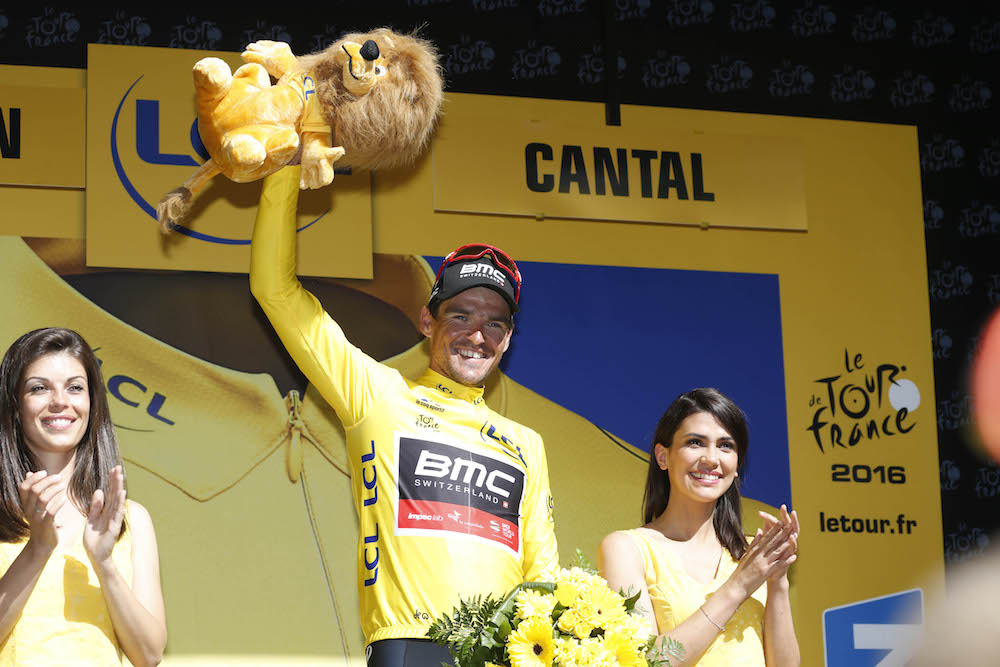
"If you have fewer expectations, sometimes you have even better results. That’s the way it was in the Tour, with a stage win and the yellow jersey. It’s such an important thing and so hard to reach for a rider like me. And then the Olympics.
"That was the best win of my career. It’s always going to remain there on the top.”
Career trajectory
The 31-year-old’s breakthrough came in 2008 with a stage win for Silence-Lotto in the Vuelta a España, and BMC signed him in 2011. Its other star, Philippe Gilbert, gained the most attention. Van Avermaet always floated near the front, attacking, but rarely netted the win.
He racked up top-10s, then fourth place in both Flanders and Paris-Roubaix, and in 2015, third in both cobbled Monuments.
Something seemed to click and he now has the confidence to make the most of his ability, and a killer instinct with it. At the 2015 Tour, he overcame Sagan in an uphill sprint victory in Rodez.
It must have helped him mentally, because he began 2016 firing. Flanders was a flop, but the world reassessed the ‘eternal second’ after the Tour and Olympics.
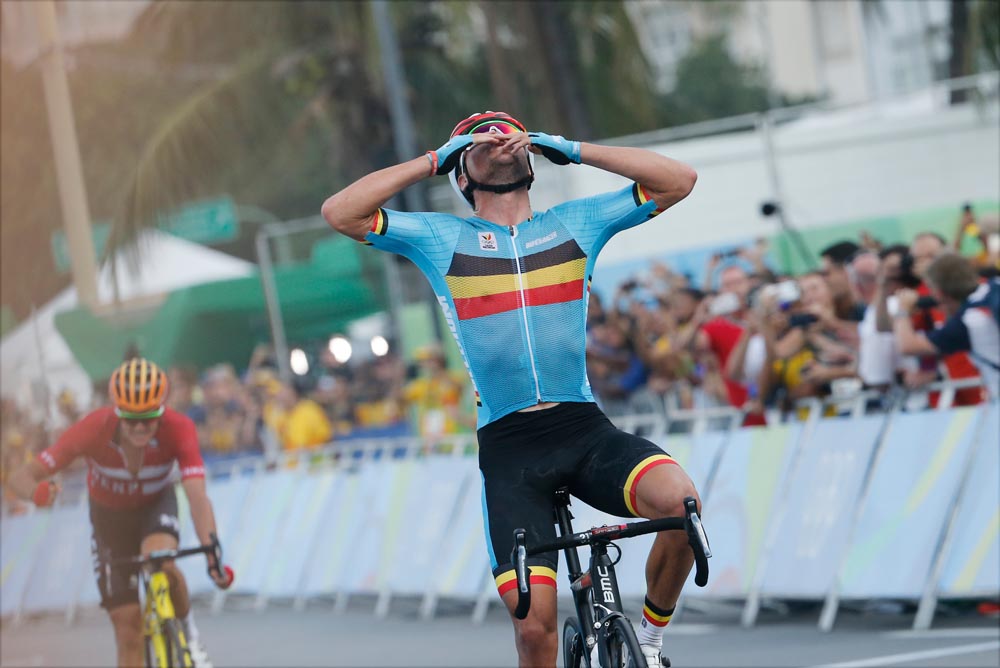
“It changed my world a little bit. I was pretty famous and important in Belgium, but that win tops it and gets more people excited about you,” he says.
“I try to be [a role model]. I can imagine that young cyclists are looking up to me and if you ask them, ‘Who is your favourite rider?’ they’d say, Van Avermaet. It’s pretty flattering.”
A family affair
Shortly after his 2015 Tour stage victory, Van Avermaet and his girlfriend celebrated the birth of their baby, Fleur. When she’s older, she will be able to hold the maillot jaune and the Olympic medal on its green ribbon to consider their meaning.
Van Avermaet did so himself with his dad’s medal from the 1980 Moscow Games.
“My father [Ronald] was always proud of this participation medal that he received for riding in the Olympics. It was always there and I’d always joke about it because he was so excited that he went to the Olympics. When I went to London, I saw that it was cool.
"Afterwards, though, I thought that I didn’t do enough. Just to participate is nice, but you need to be focused. It could be your last Olympics. You have to give it your all, if it’s for 20th or 10th, and that’s what I did in Rio,” he says.
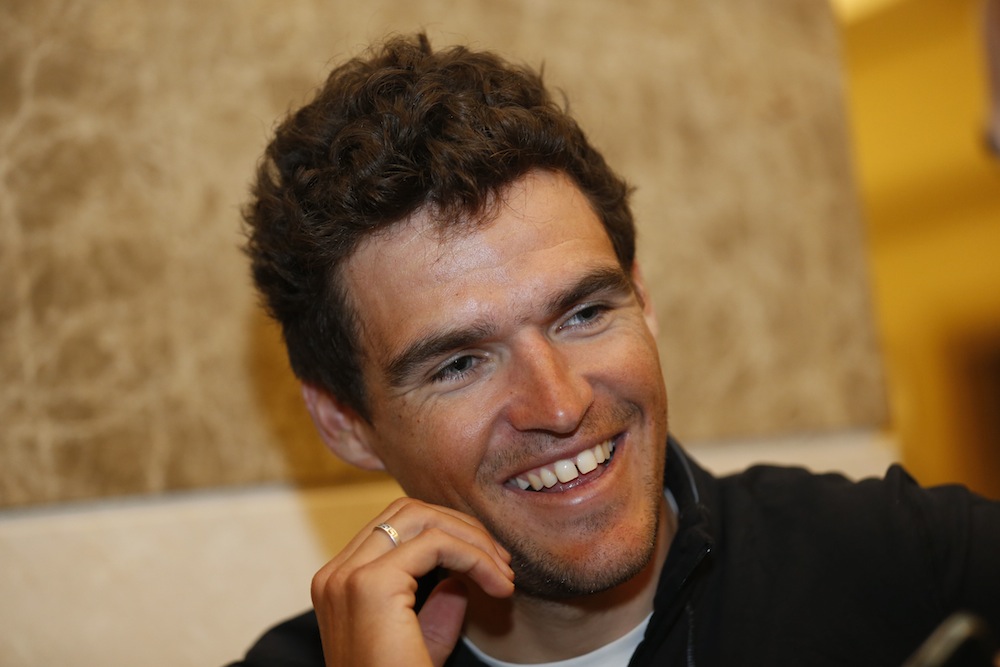
“My maternal grandfather, Kamiel Buysse, rode the Tour de France in 1959, just as a helper for the leader Alfred De Bruyne.
"He had to go for the bottles, in the cafes drinking the beers and wines, and then taking them to his team-mates. It’s funny how different it was to how we are racing now. He’s so proud that I am an Olympic champion. He goes every day to the cafe and says that there’s so much attention.
"He says: ‘People came to me to congratulate me.’ He enjoyed it so much and he said, ‘I’m so glad that I’m still here to see it, to see you become Olympic champion.’”
Keeping it real
The new champion rode a gold-painted BMC bike in the final races last season to celebrate his Olympic win. When I meet him, he speaks softly enough that I have to lean in to hear every detail.
Despite the golden bike, he does not have that ostentatious air of a cycling star. And he promises you will not see him dressing like John Travolta in Grease as Peter Sagan did.
“I don’t see myself doing a wheelie or dancing in a big show, that’s not me. I think that’s a bit crazy, the only cyclist who does that is Peter. The rest don’t do it. You just have to prove yourself with results, and the rest follows.
“I can’t change myself, that’s just how I am. I really like the attention on the podium, but afterwards, I just like to be calm. I don’t want to be in the spotlight all the time. I’m not going to try to change myself by doing crazy things. To be a superstar, you just need to perform. It’s about winning races.”
The two superstars should be duelling for the next few years for race wins. Sagan has had the upper hand so far, but it seems that the tide is turning in favour of Van Avermaet.
“I’m not scared of Peter Sagan. He can beat me, but I can beat him”
His Tour stage in 2015 came ahead of Sagan; he outgunned the Slovak for the Omloop Het Nieuwsblad victory last spring, and drag-raced him to win his Tirreno-Adriatico stage in central Italy.
When he gained the yellow jersey in the Tour, it was Sagan who lost it. Sagan did not compete in the Olympic road race; he thought the course tilted too much in favour of the Froome types and opted for the mountain bike race.
BMC beefed up its team around Van Avermaet this season to take on the Peter Sagans and Tom Boonens, but it continues to focus on positioning and placing its star in the critical moments. Unlike Quick-Step Floors with multiple leaders, it places the emphasis on its Belgian in the Classics.
“I just have to prove that I can win a Classic because I haven’t done it yet,” he says. “It has to come as fast as possible. Or, I’d like to have it as fast as possible.”

Van Avermaet’s plan is to win one of the big Monuments — San Remo, Flanders or Roubaix — and then the Worlds in Bergen, Norway. Along the way, he expects to cross paths with Sagan.
“I like to race with him because he’s an attractive rider and attacks a lot. He rides with you in the breakaway, he’s not a sprinter who just waits in the group and tries to finish it off at the finish line.
He can go off by himself, and that’s the kind of rider you have to love. I’m kind of the same. I can also win in a sprint, but most of the time I try to make the race hard, make the difference and try to go in a small group to the finish,” says Van Avermaet.
“I’m not scared of Sagan. He can beat me, but I can beat him as well. If I go to the finish, it’s 50/50. I have confidence. Always in every generation, you come across some strong riders. For this generation, it is Sagan, but I can beat him and I’m not afraid.”
This feature originally appeared in the January 12, 2017 edition of Cycling Weekly magazine.
Gregor Brown is an experienced cycling journalist, based in Florence, Italy. He has covered races all over the world for over a decade - following the Giro, Tour de France, and every major race since 2006. His love of cycling began with freestyle and BMX, before the 1998 Tour de France led him to a deep appreciation of the road racing season.
